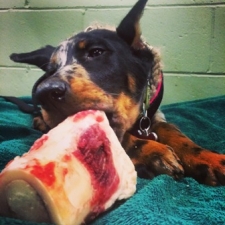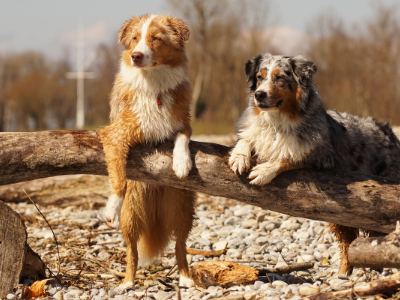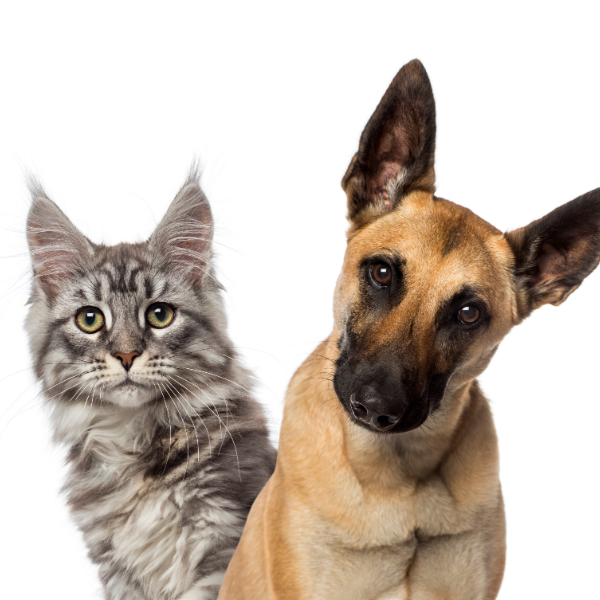Consumable Bones vs. Non-Consumable Bones
Consumable bones are any bone that can be fully eaten by your dog or cat. These bones include chicken necks, turkey necks, lamb necks, elk necks, chicken carcass, chicken wingettes, and turkey wingettes. Knuckle (joint) bones can also be consumed for the most part but sometimes include pieces of the femur that should not be ingested. Consumable bones should only be given to animals that are raw fed and have been taught to chew bones. We do not recommend that whole consumable bones be given to animals until they have been on a ground raw diet for 3-4 weeks or longer. Animals that do not eat raw have a different gastro-intestinal environment compared to raw fed animals so it's best to ease your pet into eating whole bones after a switch to raw. This is one of the best ways to avoid impaction.
Non-consumable bones such as femurs and ribs must be given only as recreation and for short periods. You must monitor your animals closely. These types of bones are not suitable for all pets so please read this whole article before deciding to feed these types of bones.
Breed and Size
The breed of your dog will help you to decide which types of bones will be most appropriate. The size of the bone you feed should be large enough that the animal must chew them down into small pieces that can be swallowed. Do not offer any bones that could be consumed in one gulp. Your dog's snout shape will also determine what types of bones will be best. For example, if you are feeding a short-snouted breed such as a Pug, Boxer, or a Bulldog, they may need to stick to poultry necks and small to medium knucklebones. At 3P, we cut our bones into various sizes to accommodate all shapes and sizes of dogs.
Cats tend to do well on small consumable bones such as chicken necks/wingtips and whole/chopped quail. We also have chicken neck bites for kittens and cats that are new to raw.
Healthy Teeth
Bones are meant to save you the cost of veterinary dental bills. That being said, when it comes to dogs, you must be aware that some dogs have a stronger bite than others and some dogs are more voracious eaters. Breeds such as Pitbulls, mastiffs, and other strong-jawed dogs may be able to chew weight-bearing bones (such as femurs) to the point of fracturing their own teeth. Certain dogs will have "softer" or more gentle mouths than others. Which type of chewer is your dog?
Your dog's voracity will help you to determine whether or not to feed weight-bearing bones. If you have a breed such as a Labrador Retriever who devours food like a Hoover vacuum cleaner, you may wish to avoid weight-bearing bones altogether or limit the amount of chewing time they have with these bones. The marrow from femur bones is highly nutritious and should not be left out of the raw diet so you can either choose to give your dog a short, monitored chewing session with a femur or simply push out the marrow and feed with a meal. Do not leave femurs out for hours for any dog to chew. Let them lick as much of the marrow out as they can and then help them eat the rest. Then discard the rest of the bone in a safe garbage can that cannot be ransacked by your dog.
Healthy Gut
A raw diet is meant to enhance your dog's overall digestive health. To ensure that intestinal health is maintained, you must be aware of how often to feed bones and to balance bones in a healthy way. There is such a thing as too much bone and constipation or impaction can occur. This is one of many reasons not to feed consumable bones to kibble-fed animals. Raw fed pets can also receive too much bone. They may become constipated and have hard, yellowish, or whiteish stools. If this happens, you will need to assess why. It is possible you are feeding too many consumable bones. Consumable bones will provide calcium, phosphorus, chondroitin other trace minerals and will bulk up the stool. Femurs will provide marrow, high in fat and other important minerals. Marrow generally does not cause constipation.
Bones must ALWAYS be fed raw. Cooked bones can splinter and cause impaction, perforation of the gut, and even death. Never allow your dog to bury bones in the yard for the same reason and to avoid bacterial contamination.
*Disclaimer: Our bone guidelines come from over 30 years of combined raw feeding experience. They are meant only as a guide to provide the safest and healthiest raw diet possible, in our experience. Always check with your holistic veterinarian for the final say on which bones to feed your pet if you are unsure.



